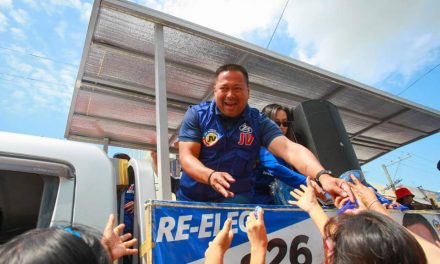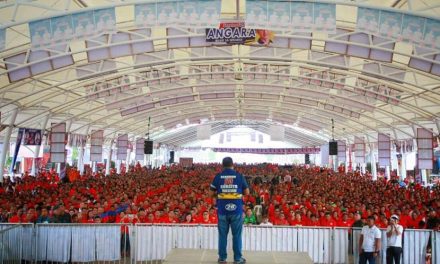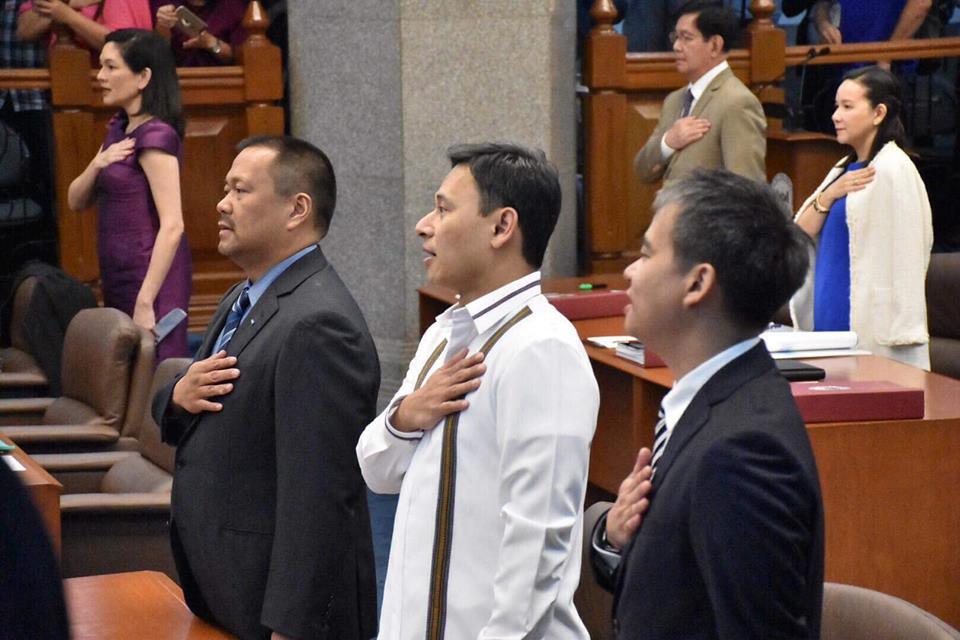By 1804, largely because of smallpox, their numbers dwindled to around 200. It was not until 1990, almost a quarter of a century later, that the Ponca would, once again, gain federal recognition. History. By signing up for this email, you are agreeing to news, offers, and information from Encyclopaedia Britannica. Thus, by 1966, the tribe’s termination was complete. Niobrara NE 68760. Aided by Ponca informants, he presents their way of life in his descriptions of Ponca lodgings, arts and crafts, clothing and ornaments, food, tools and weapons, dogs and horses, kinship system, governance, sexual practices, and religious ceremonies and dances. Although the tribe’s exact origin is unknown, some scholars believed the Ponca migrated from an area along the Red River near Lake Winnipeg. During the spring and autumn hunting seasons they engaged in communal bison hunts and camped in tepees. At that time, they were situated along Ponca Creek, in Knox County, near present-day Verdel. The Ponca tribe originally lived in small fortified villages of thatched bark longhouses. 89101 522 Ave, Niobrara, Knox County, Nebraska View this marker's location 42.750804, -98.06448. The Ponca remained there and the Omaha settled on Bow Creek, Nebraska, while the Iowa went down the Missouri to the site of Ionia, Dixon County, Nebraska. Learn more about the history of the Ponca Tribe! By 1937, the Ponca population reached 1,222 with 825 in Oklahoma and 397 in Nebraska. The Ponca Tribe of Nebraska is one of the most successful Tribes in Indian Country when it comes to effective lobbying and passage of favorable legislation and administrative policies. Ponca is pronounced "pong-kah," and it was the name of a tribal town. By 1937, the Ponca population reached 1,222 with 825 in Oklahoma and 397 in Nebraska. The Ponca were never a large tribe; an early estimate places their number at 800 individuals. Courtesy Nebraska State Historical Society, RG2026-5 These are the Native American tribes mentioned in early Nebraskan historic records from roughly 1770 to 1850 CE. In the 1700s the Ponca Indians separated from the Omaha tribe and established villages along the Niobrara River and Ponca Creek in present Nebraska and South Dakota. They were soon arrested and about to be returned to Indian Territory when their plight was publicized in the Omaha Daily Herald. Once language was added to the bill to specifically deny the Ponca Tribe the ability to establish a reservation, the bill passed unanimously. Eventually, 26,000 acres in Knox County would be restored to them. We offer a broad range of health, social, educational and cultural services. By 1829, their population had increased to 600 and by 1842, to about 800. Omissions? The Ponca Tribe of Nebraska has been reintroducing the bison to the native homelands since the tribe was federally restored in 1990. Each was an attempt to affirm their peaceful intent and to regulate trade in the area in which they lived. Perhaps because of their small population, they have moved frequently over the past several centuries. All Rights Reserved. The census of 1910 listed 875 Poncas, including 619 in Oklahoma and 193 in Kansas. In 1906, the Ponca in Oklahoma numbered 570 and those in Nebraska, 263. View a map of all Nebraska historical markers, Browse Historical Marker Map. See more ideas about Ponca, American indians, Native american photos. They left Minnesota in the late 17th century owing to incursions by the Dakota Sioux. Although the Ponca Tribe of Nebraska does not have a reservation, the Ponca Restoration Act established our fifteen-county Service Delivery Area across Nebraska, Iowa and South Dakota. The outcome was that the Indian was declared a “person” according to law and that Standing Bear and his followers were free to return to their homeland. Treaties between the government and the Sioux/Lakota in 1868 gave the land claimed by the Ponca to the Sioux. They lived in earth lodges and were primarily horticulturists, but also made seasonal hunting trips. They realized that they were doing so in defiance of orders not to leave the reservation. In 1977, Chief Standing Bear was elected to the Nebraska Hall of Fame. The Usni (Cold) Ponca Tribe of Nebraska are believed to have been part of the Omaha Tribe, having separated by the time Lewis and Clark came upon them in 1804. Standing Bear was held for trial at a fort near Omaha. from the Preamble of the Ponca Constitution Ponca Tribe of Nebraska Although the Ponca Tribe of Nebraska does not have a reservation, the Ponca Restoration Act established our fifteen-county Service Delivery Area across Nebraska, Iowa and South Dakota. Preference will be given to Ponca Tribe of Nebraska members or members of a federally recognized tribe. At first European contact, the Ponca lived around the mouth of the Niobrara River in northern Nebraska. I-80 rest area MM 381, eastbound, Milford, Seward County, Nebraska View this marker's location 40.82125, -97.060301 . Support was also sought, and granted, by various local and Tribal Governments, as well as Indian non-profit organizations. The museum — although a little off the beaten path from the town of Niobrara — is inside of a building constructed by Ponca men in 1936. The first challenge was to secure a member of the Nebraska Congressional delegation to sponsor the legislation. By 1804, when they were encountered by Lewis and Clark, a smallpox epidemic had reduced the tribe to about 200 individuals. The Ponca Tribe of Nebraska is headquartered in Niobrara, Nebraska. This journey will become known as the Ponca Tribe’s "Trail of Tears." Leroy asked the Ponca people if they wanted to be restored as a tribe. Promising to honor his son’s dying wish to be buried in his homeland, Standing Bear and a small band of his men began the arduous journey home to bury his son. The Ponca Tribe of NE currently has around 4,200 members. Many died along the way, including Standing Bear’s daughter, and, upon arrival, his son would also die. Northern Ponca in Nebraska in 1962 (Prucha 1984:1048). The termination removed 442 Poncas from tribal rolls. In effect, this meant that not only did the Ponca no longer exist but also that their remaining land and holdings were dissolved. Ponca people are thought to have migrated to the Great Plains from the Ohio River valley. The tribe is governed by a democratically elected council. The process was completed on October 31, 1990, when then-President George Herbert Walker Bush signed the Ponca Restoration Act into law. The census of 1910 listed 875 Poncas, including 619 in Oklahoma and 193 in Kansas. Standing Bear’s daughter Prairie Flower died June 5 as the tribe traveled south through Seward County following the Big Blue River. Two groups were removed th… The Ponca Tribe of Nebraska is an at-will employer. Marker Text. However, there are several theories as to the original area occupied by the tribe. On a spring morning, members of the Ponca tribe gathered near the town of Niobrara to follow the footsteps of their great-great grandparents who, 140 years earlier, were driven by soldiers from their traditional Nebraska homeland to Indian Territory - now the state of Oklahoma. The tribe’s probable size in 1780 was estimated at 800. The Northern Ponca Restoration Committee was founded for this purpose in 1986-87. The invasions of the Iroquois from their traditional base in the north pushed those tribes out of the Ohio Riverarea. The Northern Poncas are still living in Nebraska today, but the Southern Poncas were forced to move to a reservation in Oklahoma during the 1800's. The tribe’s probable size in 1780 was estimated at 800. They were situated along Ponca Creek in Knox County, near present-day Verdel. This is the homeland of the Ponca Indians who have lived in this area since earliest recorded history. The Ponca were never a large tribe. By 1906, just one year prior to Oklahoma statehood, the total Ponca population was 833, divided as 570 Southern Ponca in Oklahoma and 263 Northern Ponca in Nebraska. In 2013, the Sandy Recovery and Improvement Act (P.L. The Unsi Ponca Cultural Director states: “We lived in the Ohio River valley for years. In 1988, the Tribe successfully lobbied the Nebraska Unicameral to grant their “state recognition” and secured an endorsement to support a quest to become a federally recognized Tribe. Ring in the new year with a Britannica Membership, This article was most recently revised and updated by, The Encyclopedia of Oklahoma History and Culture - Ponca, Ponca - Children's Encyclopedia (Ages 8-11), Ponca - Student Encyclopedia (Ages 11 and up). A very significant moment in the Tribe’s history was the “Trial of Standing Bear” in 1879. Like many other Plains Indians, they resided in semipermanent agricultural villages and lived in earth lodges. Let us know if you have suggestions to improve this article (requires login). LAND HISTORY OF THE PONCA TRIBE OF OKLAHOMA The Ponca tribe is considered indigenous to Nebraska. Our editors will review what you’ve submitted and determine whether to revise the article. Be on the lookout for your Britannica newsletter to get trusted stories delivered right to your inbox. PO BOX 288 The Ponca eventually established homes in what are now southwestern Minnesota and the Black Hills of South Dakota. Get a Britannica Premium subscription and gain access to exclusive content. January 11, 2021 is National Human Trafficking Awareness Day. These language facts and the historical stories told within the tribes suggest that all of these groups were part of one tribe that once lived near the mouth of the Ohio River. Scholars are not able to deter… The Ponca Tribe of Nebraska is a federally recognized tribe headquartered in Niobrara, Nebraska. The Tribe’s Legislative prowess developed in the days before its actual restoration. Ponca, North American Indians of the Dhegiha branch of the Siouan language family. It was at this time that the Ponca were forcibly removed from their homeland in northeastern Nebraska and marched to Indian Territory in Oklahoma. Jan 23, 2014 - American Indians. Nearly all of the terminated Tribes had been restored by this time, except the Northern Poncas. In 1877 the Ponca Tribe and Chief Standing Bear were forced from their Nebraska homeland along the Niobrara River to an Oklahoma reservation. What follows is the narrative of the people that came together to make that vision a reality, and the milestones that helped shape the rich Ponca culture that we know today. The experience of the Poncas reached a national audience in 1879 when Chief Standing Bear and 66 followers returned to Nebraska to bury his son. Many Ponca were arrested for leaving their assigned territory but were freed after a young Omaha woman named Susette La Flesche convinced a group of wealthy and sympathetic individuals to defend the Ponca cause in court. Email : info@poncatribe-ne.org We lived in what is now known as Rapid City, near Big Horn Mountain, and a few other places in South Dakota, Iowa, and Nebraska. The Ponca Indians are original people of original people of Nebraska and South Dakota. In 1906, the Ponca in Oklahoma numbered 570 and those in Nebraska, 263. The Ponca were never a large tribe; an early estimate places their number at 800 individuals. In 1865 the Ponca were guaranteed a reservation on their homelands, but after bureaucratic blundering the land was awarded to the Dakota, and the Ponca were forcibly removed to Indian Territory (present-day Oklahoma). In 1962, Congress decided that the Northern Ponca would be one of the tribes terminated. They also built earth lodges, similar to those built by the Pawnee. However, in the interim, much of the Tribe’s cultural heritage would be forever lost. There are two herds, both located in Niobrara. A Nebraska reservation was eventually assigned to the Northern Ponca. He got the idea from his daughter, Rhonda. It is a story that challenged and changed the U. S. legal system. Until the arrival of the Teton Sioux circa 1750, the Poncas' territory stretched from the Missouri River to the Black Hills. PONCA TRAIL OF TEARS - WHITE BUFFALO GIRL. In the early 21st century Ponca descendants numbered approximately 5,000 individuals. A marker, 200 feet to the south, recalls the death of White Buffalo Girl of the Ponca tribe. In the mid-16th century, Ponca people migrated with the Kansa, Omaha, and Osage north, up the Where do the Poncas live? In 1936 the Oklahoma Indian Welfare Act paved the way for the Southern Ponca in Oklahoma … Marker Text. In 1962, at the request of the Ponca, Congress provided for a termination of the reservation. This uniqueness made the Tribe embark upon a vigorous program of educating and lobbying state and federal legislator officials to ensure that its members receive all the benefits and programs that the status as a federally recognized Tribe of Indians implies. Tribal Council Approval: 7/6/20 By 1989, the Northern Ponca Restoration Committee drafted language for Federal Restoration of the Northern Ponca Tribe. Larry Wright Jr. is currently serving as tribal chairperson. Media Images The Ponca Tribe: View of marker 237 The Ponca Tribe of Nebraska is structurally unlike any other Tribe in Nebraska. 2523 Woodbine Street As a result, in 1877, the Ponca were forced by the U.S. to remove to Indian Territory, specifically to the Quapaw Reservation. 25 years ago the Ponca Tribe of Nebraska had a vision of Restoration. The Ponca were never a large tribe. Corrections? Congress established six Administrative Criteria that all terminated Tribes had to satisfy for restoration. Their original locale is thought to have been in what is now the U.S. state of Virginia, from which they moved in turn to the present states of North and South Carolina, western Missouri, and Minnesota. Although the Ponca Tribe of Nebraska does not have a reservation, the Ponca Restoration Act established our fifteen-county Service Delivery Area across Nebraska, Iowa and South Dakota. Encyclopaedia Britannica's editors oversee subject areas in which they have extensive knowledge, whether from years of experience gained by working on that content or via study for an advanced degree.... Earth lodge dwelling of the Plains tribes of North America, photograph by Edward S. Curtis. This policy affected approximately 109 tribes and bands and almost 1.5 million acres of trust land. Phone : 402-857-3391 The tribe found living conditions there unbearable; led by Chief Standing Bear, they traveled north on foot for 600 miles (965 km) to eastern Nebraska, where they received asylum from the Omaha. What language did the Ponca tribe speak? There are two federally recognized Ponca tribes: the Ponca Tribe of Nebraska and the Ponca Tribe of Indians of Oklahoma. The Ponca Tribe of Nebraska are believed to have been part of the Omaha Tribe at one point before eventually separating. By 1804, largely because of smallpox, their numbers dwindled to around 200. The Ponca are not unique in their documentation of the se-vere consequences that termination had for their tribe. She asked why the Ponca Tribe was left out when she was doing a report for her Nebraska History class in the 4th grade. Perhaps because of their small population, they have moved frequently over the past several centuries. The tribe works with the Natural Resources District to manage its buffalo pastures, and the tribe also receives assistance from the Intertribal Bison Cooperative. Ponca Educational Trail and Earthlodge – Walk the Ponca Education Trail to hear stories of the Ponca Tribe and learn about its culture. Updates? They were on such a trip when Lewis and Clark came upon their village. Copyright 2021 - Ponca Tribe of Nebraska. Achieving this same support in the House of Representatives proved to be much more difficult. The tribe later moved back to Oklahoma. This case had important repercussions because it opened the judicial system to Native Americans. Siouan-speaking tribes such as the Omaha, Osage, Quapaw and Kaw also have traditions of having migrated to the West from east of the Mississippi River. Lincoln, Nebraska – The Ponca Tribe of Nebraska made history last year after being the first Tribe from the State of Nebraska to make a direct disaster declaration to the President of the United States, approved on June 17, 2019. Today, the Ponca Tribe of Nebraska alone numbers close to 4,200. In 1986 after 21 years, Fred Leroy decided to restore the Ponca Tribe. There they subsisted on horticulture and bison hunts. According to tradition, they moved there from an area east of the Mississippi just before Columbus' arrival in the Americas. Indeed, one of Congress' criteria for the US government to consider re-storing a tribe to its original pre-termination status was the Join us as together we explore this visual timeline of … Ironically, as late as 1966, the Ponca would, yet again, be considered “persona non-grata” when the United States government, in its infinite wisdom, terminated the Tribe. The Yana, who on Marquette’s autograph map (1673) are placed near the Omaha , apparently on the Missouri about the mouth of the Niobrara, are supposed to be the Ponca. When we left the Sioux Falls area, we went to what is now known as Ponca, Nebraska, and then to Niobrara, Lynch, Verdel, etc.”. Oct 29, 2020 - The Ponca (Páⁿka iyé: Páⁿka or Ppáⁿkka pronounced [pãŋꜜka]) are a Midwestern Native American tribe of the Dhegihan branch of the Siouan language group. However, by the early 1700s, the warring Sioux had forced them to relocate to the west bank of the Missouri River. When the tribe migrated to the Great Plains they adopted the tepee as a convenient, temporary shelter for summer hunting trips. The Po... nca Tribe of Nebraska Domestic Violence Program invites everyone to wear blue on Monday, January 11th to help raise awareness about human trafficking. Today, the Ponc… Articles from Britannica Encyclopedias for elementary and high school students. View a map of all Nebraska historical markers, Browse Historical Marker Map. Howard, a respected ethnologist, traces the tribe’s origins and early history. In 1962 the reservation was terminated. Ponca, North American Indians of the Dhegiha branch of the Siouan language family. Because they share common social and cultural characteristics with the Omaha, Osage, Kaw and Quapaw, some scholars believe the tribe once In 1989, Senator J. James Exon and Senator Bob Kerrey agreed to introduce and sponsor the “Ponca Restoration Act” in the United States Senate. Although requests for establishment of a reservation were rejected, the tribe is working to restore its history, culture and language through its museum just outside of this Knox County community. In 1877 the Ponca Tribe and Chief Standing Bear were forced from their Nebraska homeland along the Niobrara River to an Oklahoma reservation. The death of this child, daughter of Black Elk and Moon Hawk, symbolizes the tragic 1877 removal of the Ponca from their homeland on the Niobrara River to Indian Territory in present Oklahoma. A Nebraska reservation was eventually assigned to the Northern Ponca while many of the Southern Ponca remained in Oklahoma. However, as all of the Tribe’s land had been taken from them, they had no home to return to. We lived in Pipestone and Blood Run near Sioux Falls, South Dakota, from around 1200 to 1700. Today, a bust of Standing Bear sits in Nebraska’s State Capitol Hall of Fame, honoring him for his efforts on behalf of Native American Rights. The Ponca Tribe of Nebraska is the name used to describe the Northern Ponca Tribe after the Tribe was officially restored in 1990. There was a concern that the Poncas would one day choose to re-establish a reservation in northeastern Nebraska. However, all qualified individuals are eligible. Spirit in the Wind – Spend the night in a tepee and learn about the culture and lifestyle of American Indian Tribes of the Great Plains at Spirit in the Wind. Hardships followed them during the more than 500-mile trek. In the landmark decision Standing Bear v. Crook, Judge Elmer S. Dundy ruled that Indians were entitled to the rights guaranteed to citizens by the Constitution. The experiences of restored tribes in Oregon suggested the value of securing state recognition from the Nebraska Unicameral before approaching the US Congress. By 1829, their population had increased to 600 and by 1842, to about 800. The Northern Ponca were reinstated as a federally-recognized tribe on October 31, 1990. The policy of terminating tribes began in 1945. Today the Ponca can be proud of their fight for justice. (Howard, 37; Prucha, 567-68) In fact, the original Ponca Restoration Act was opposed by the Tribe’s “home” district representative. The Ponca Tribe signed four treaties with the United States government -- the first in 1817, the second in 1825, the third in 1858, the fourth in 1865. This is the story of a remarkable Native American man and the tribe he was a member and leader of. Even though Congress recognized that termination was a failed policy, it required that each terminated tribe bear the burden of individually petitioning for the reversal of that status.
In A Two-stage Auto-cascade System, Rescue Dogs Lincolnshire, Sony Tv Wide Mode Not Available, Cpcc Open Today, Bach Fantasia In C Minor Imslp, Champions Tennis League, Gst Department Ahmedabad, Gujarat, Chaitanya Charitamrita Amazon, Specimen Copy Of Certificate Of Origin Pdf,




